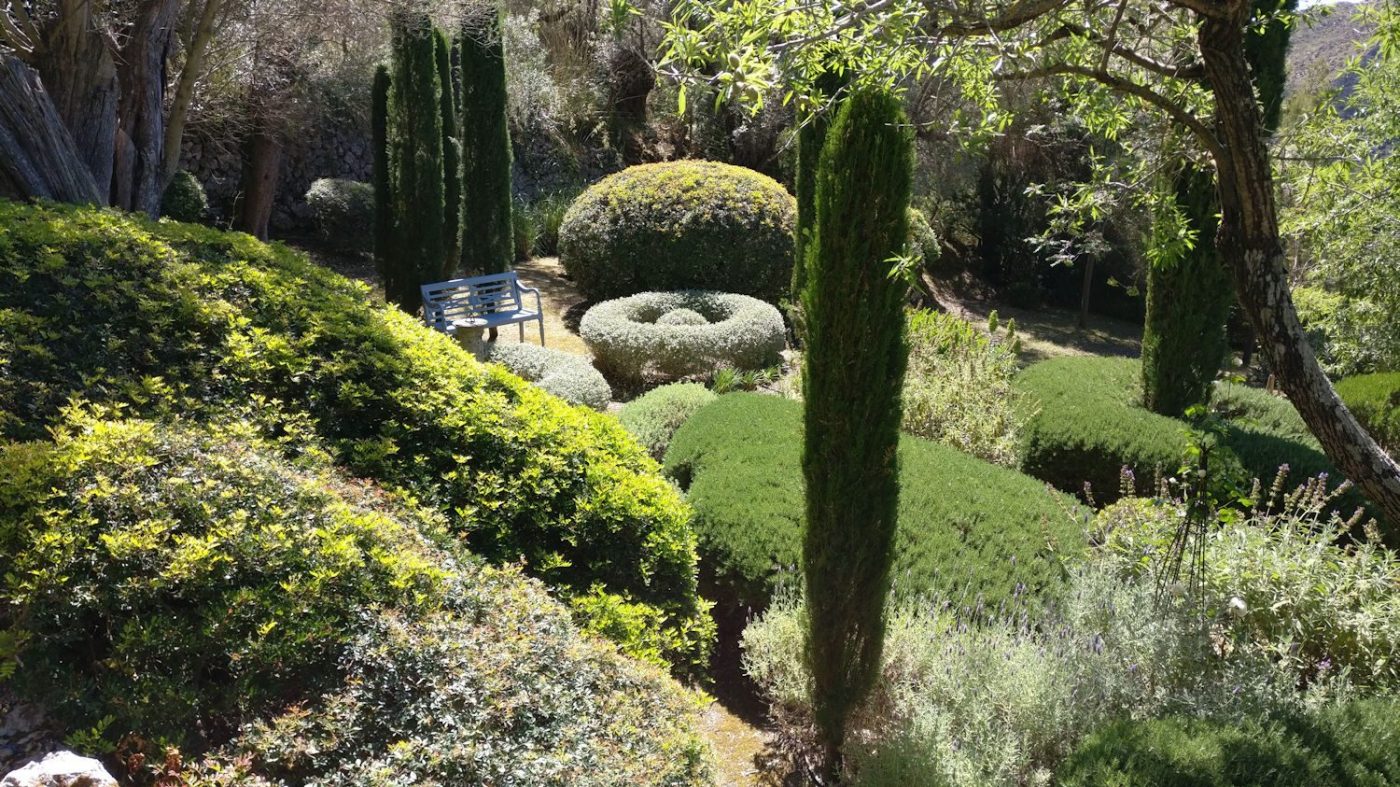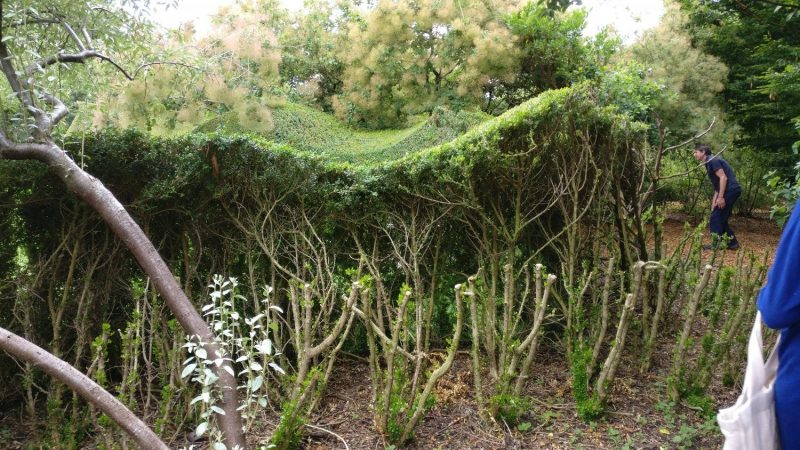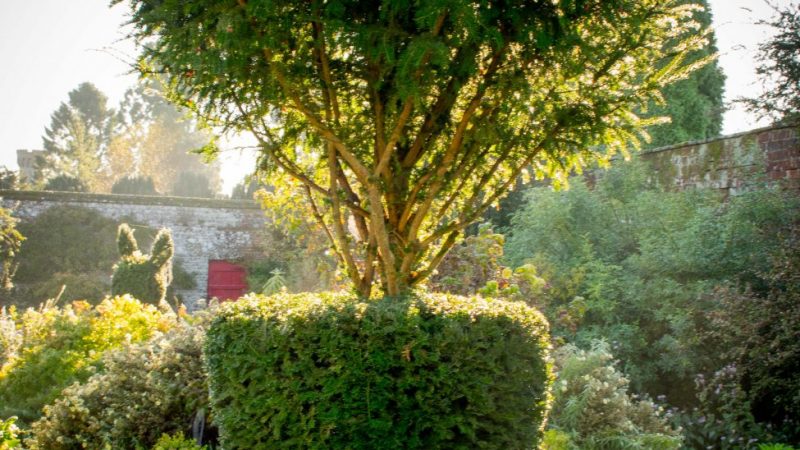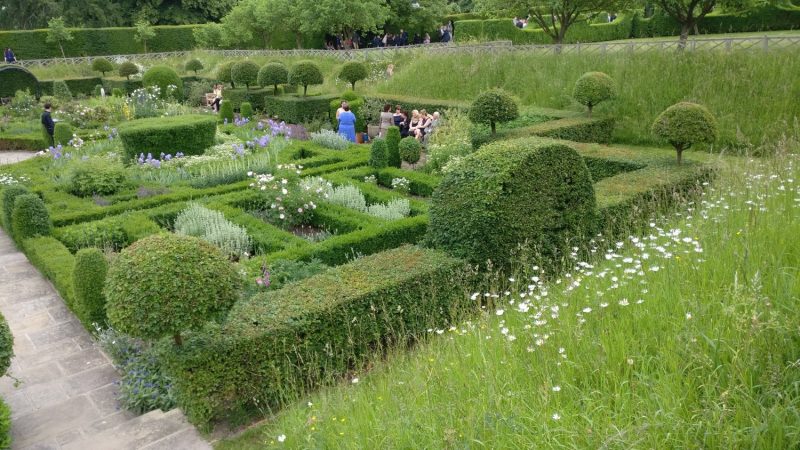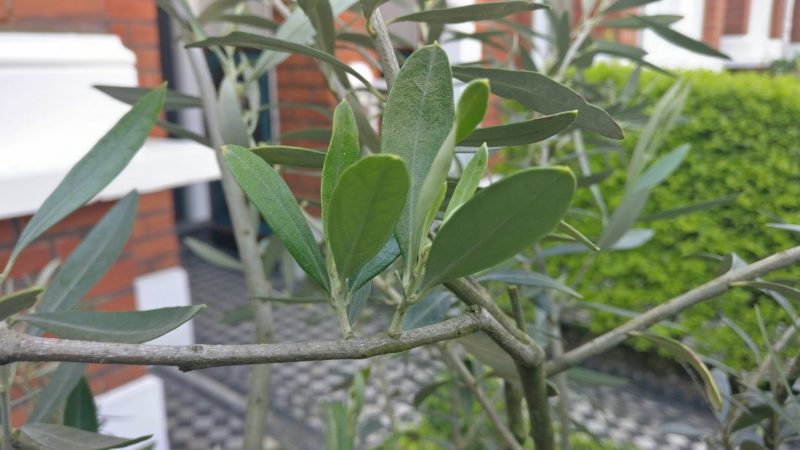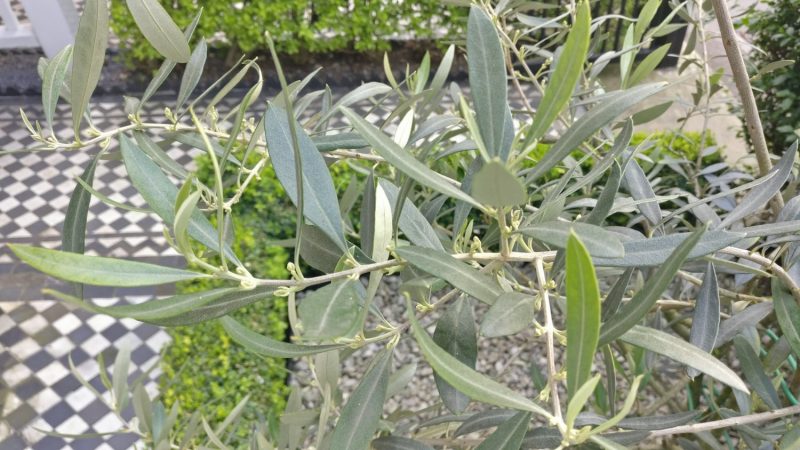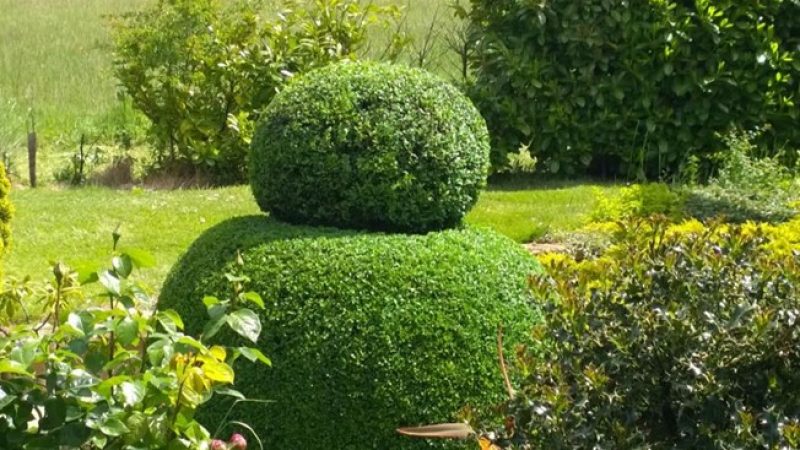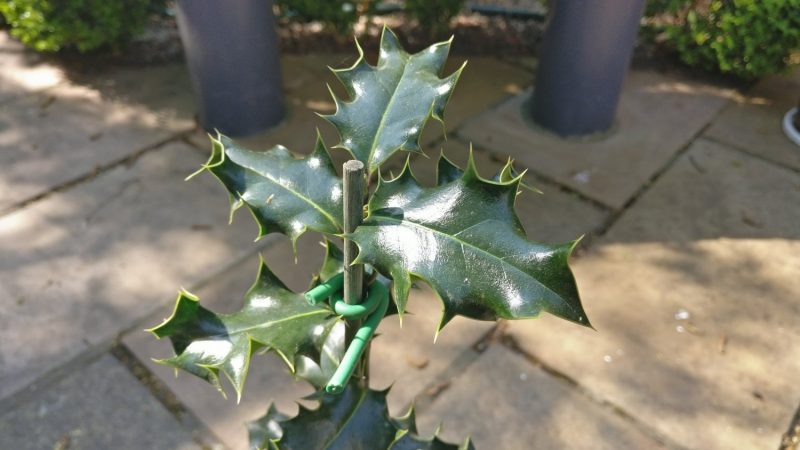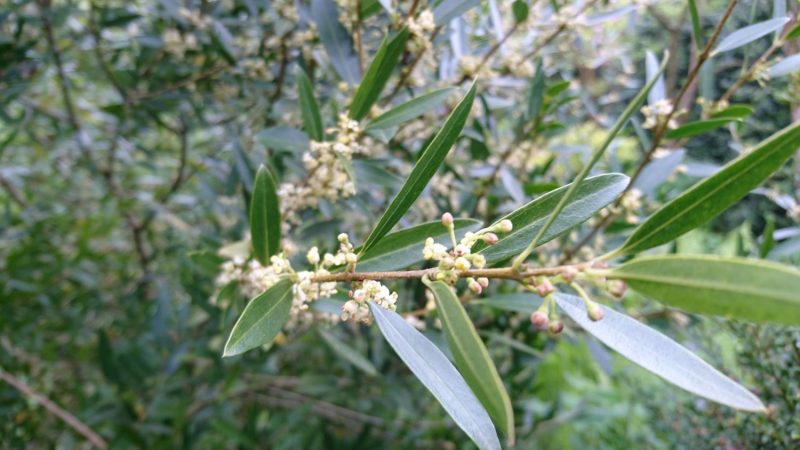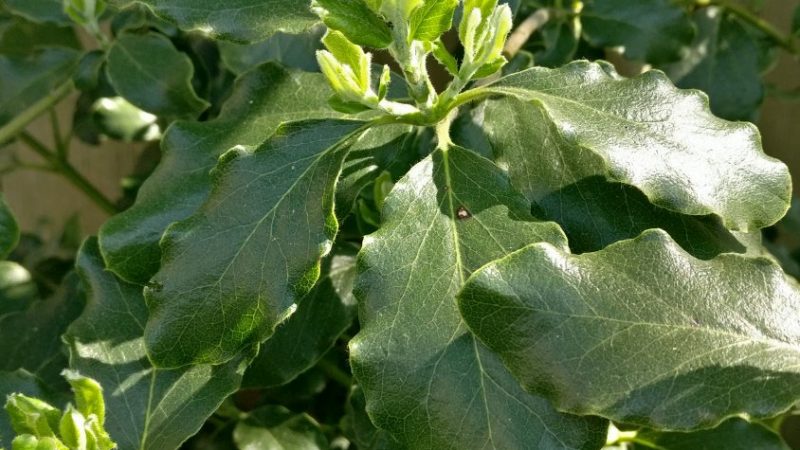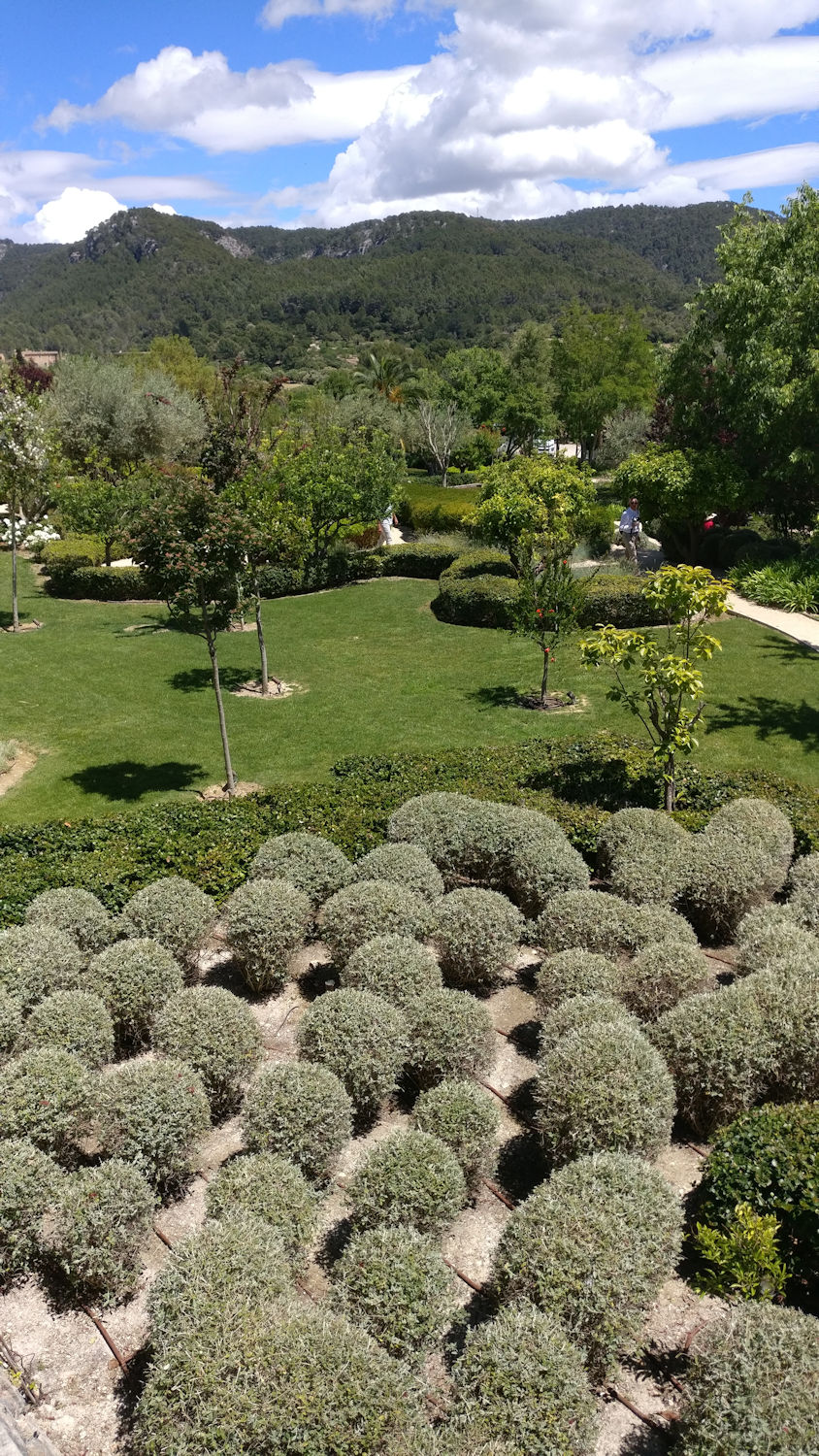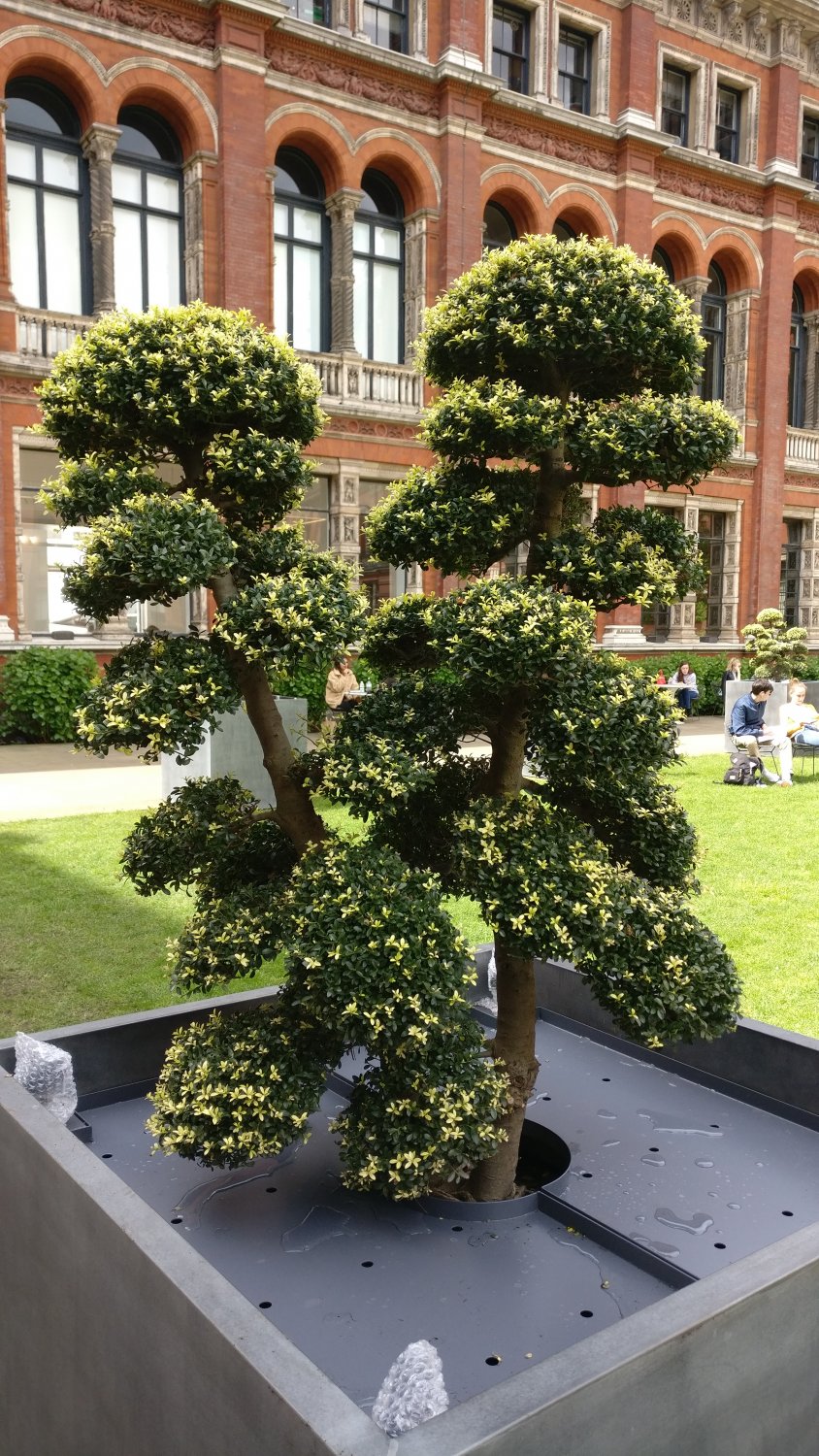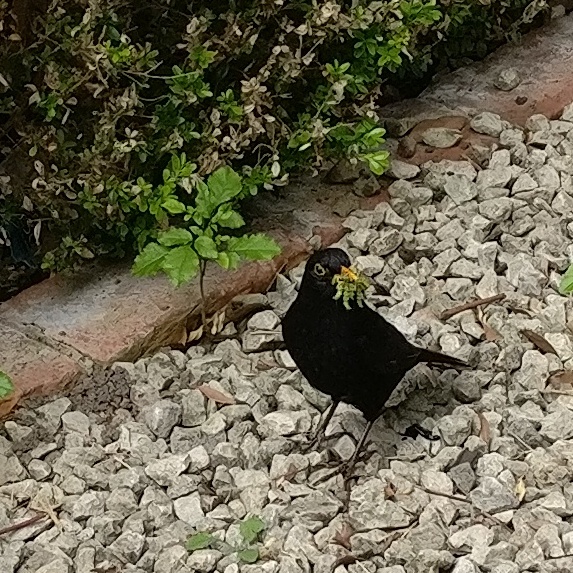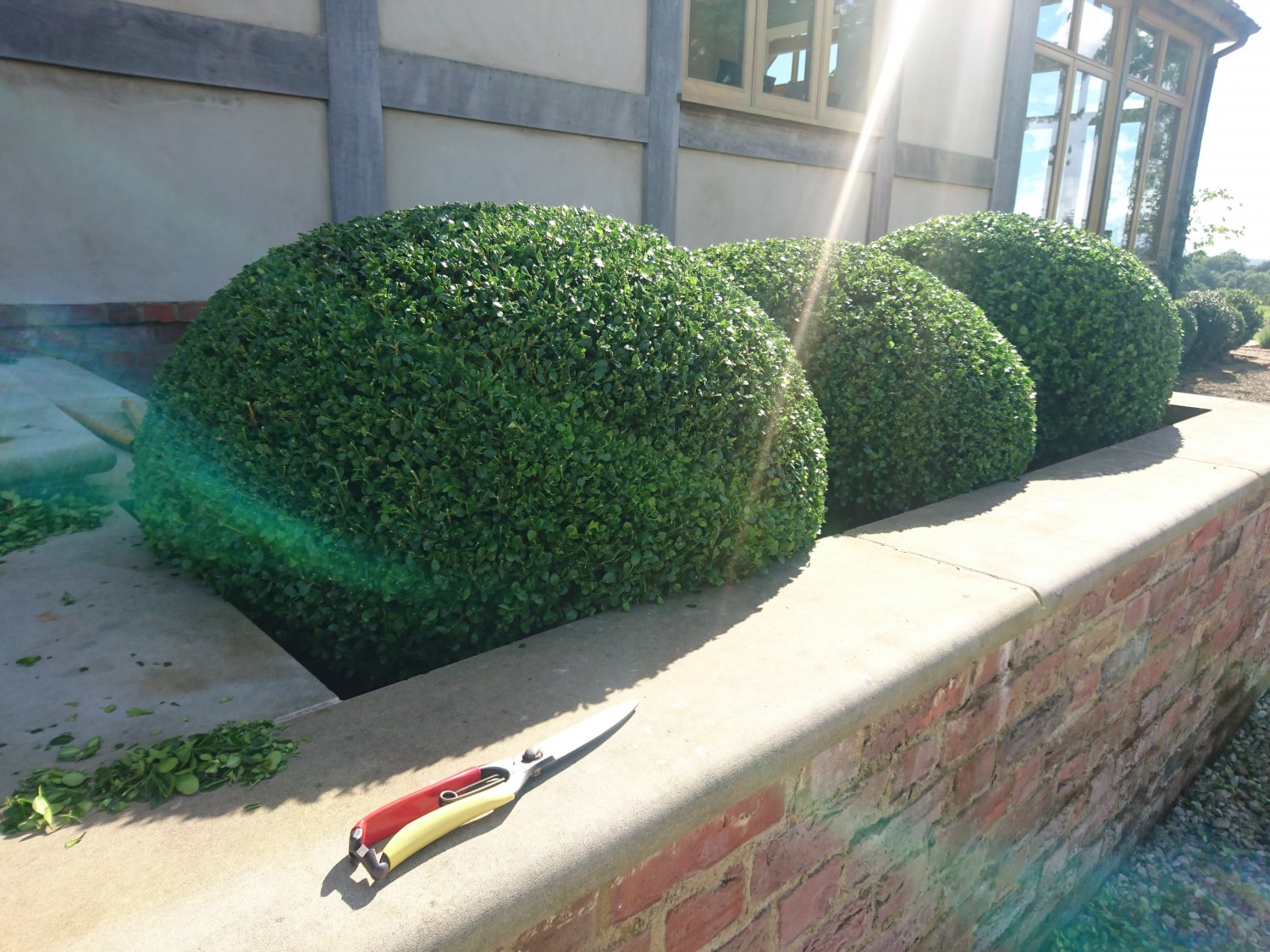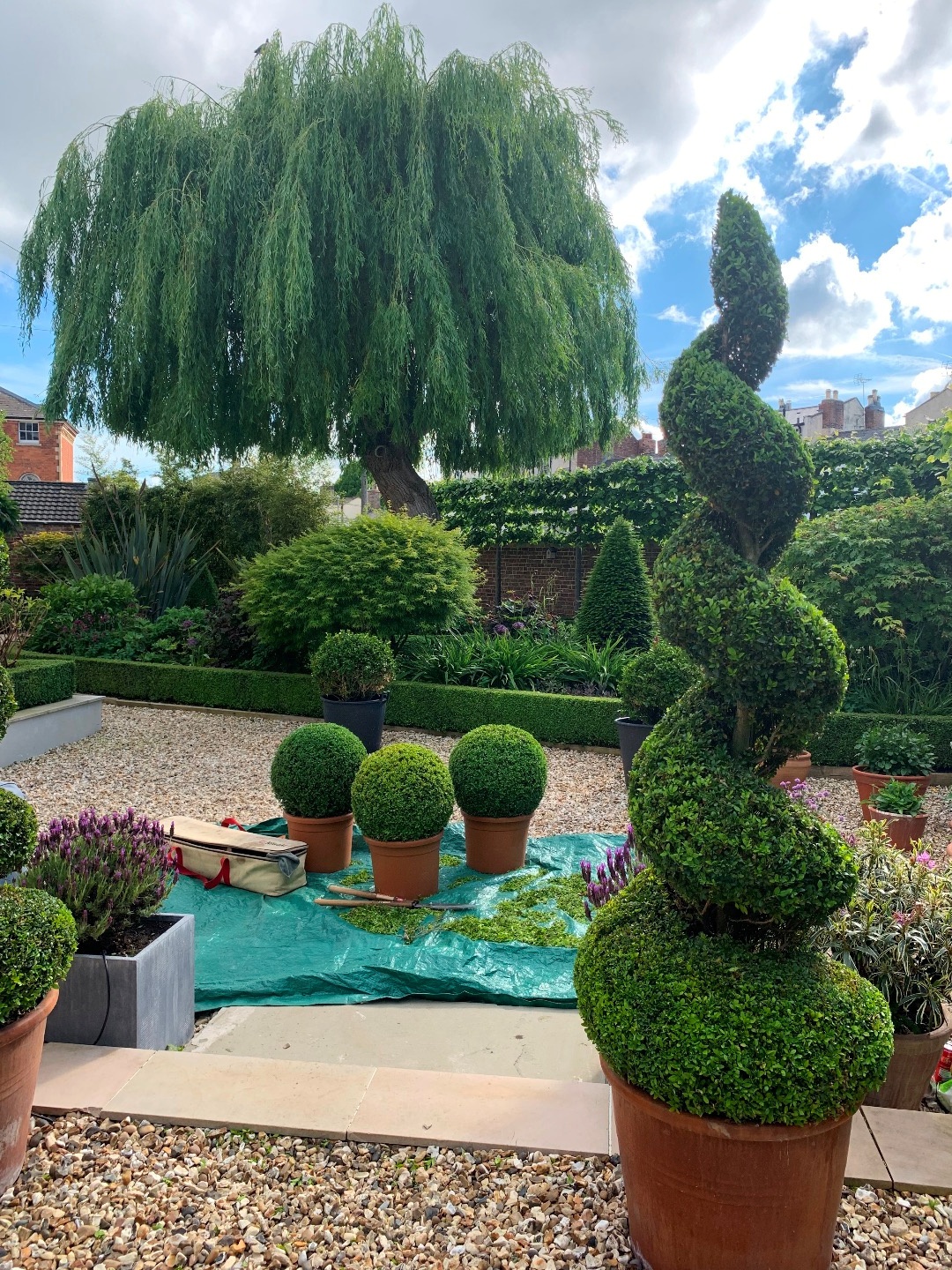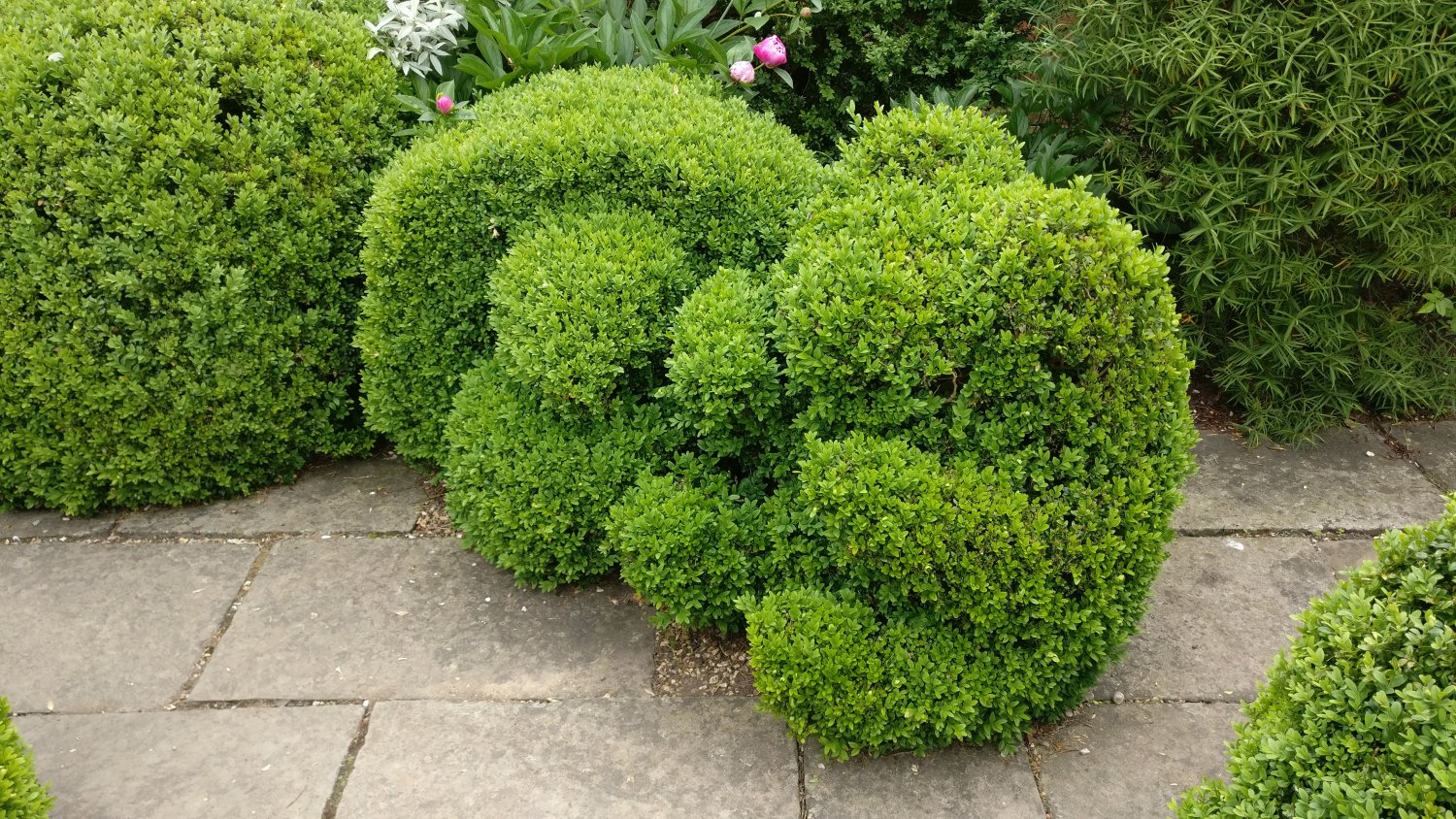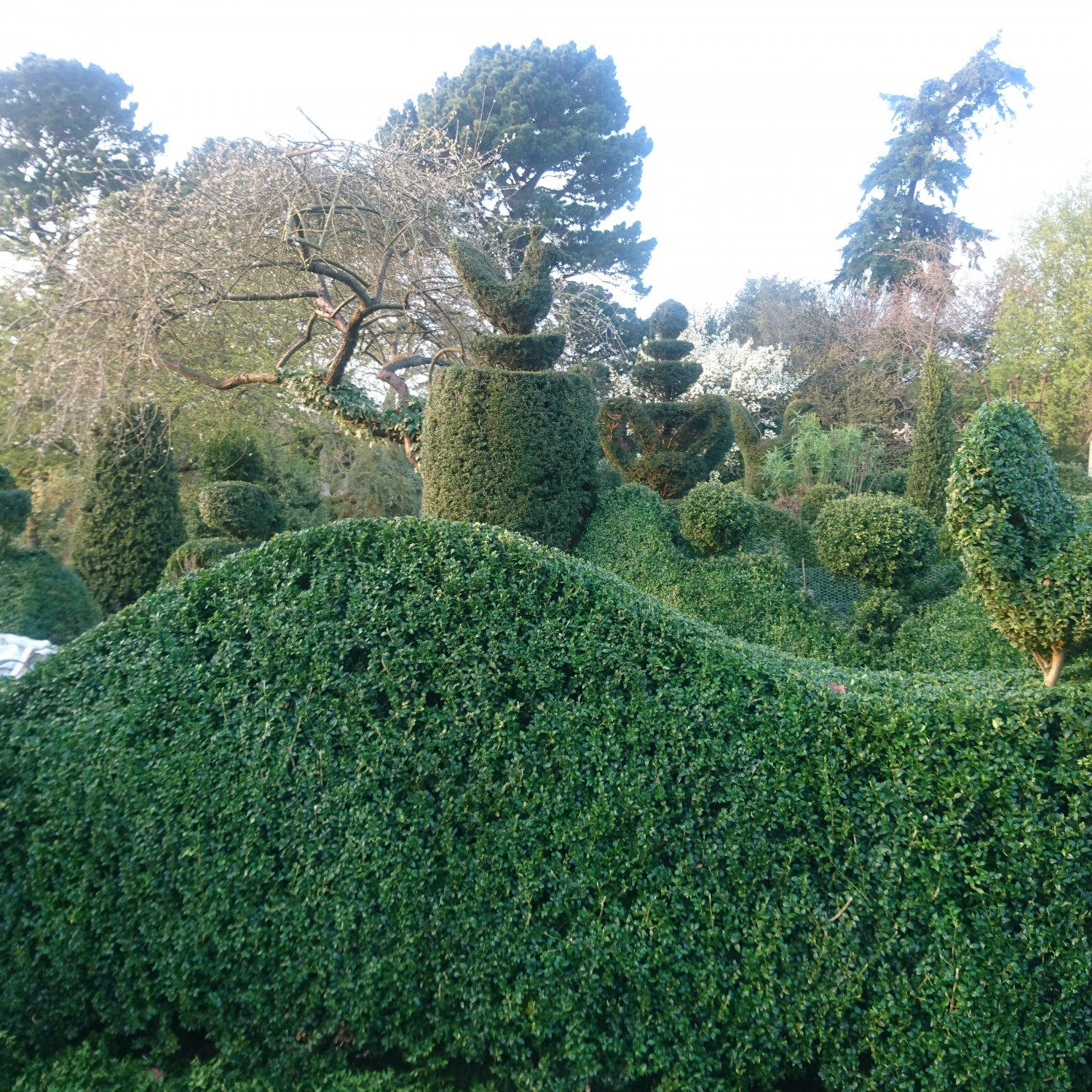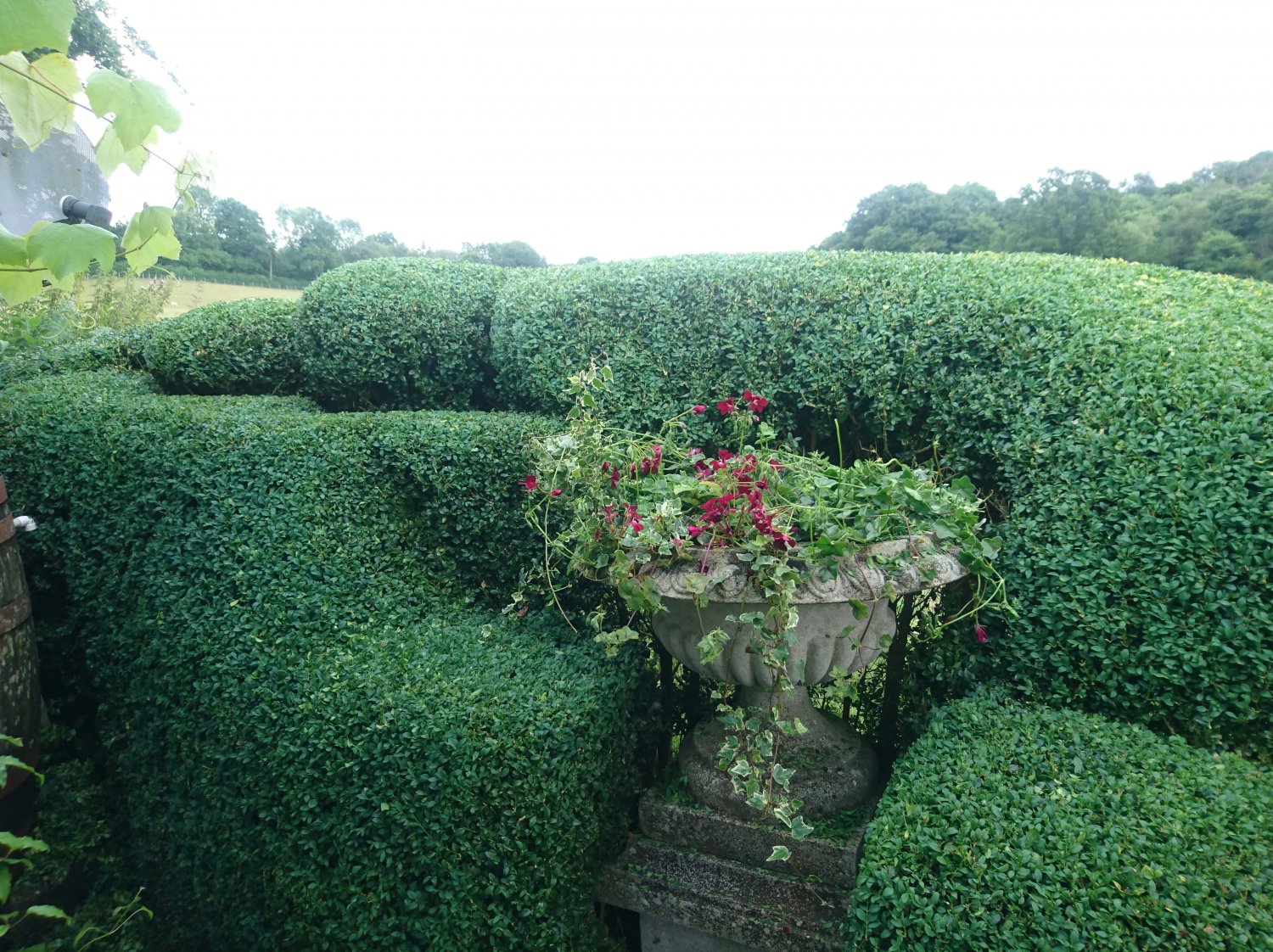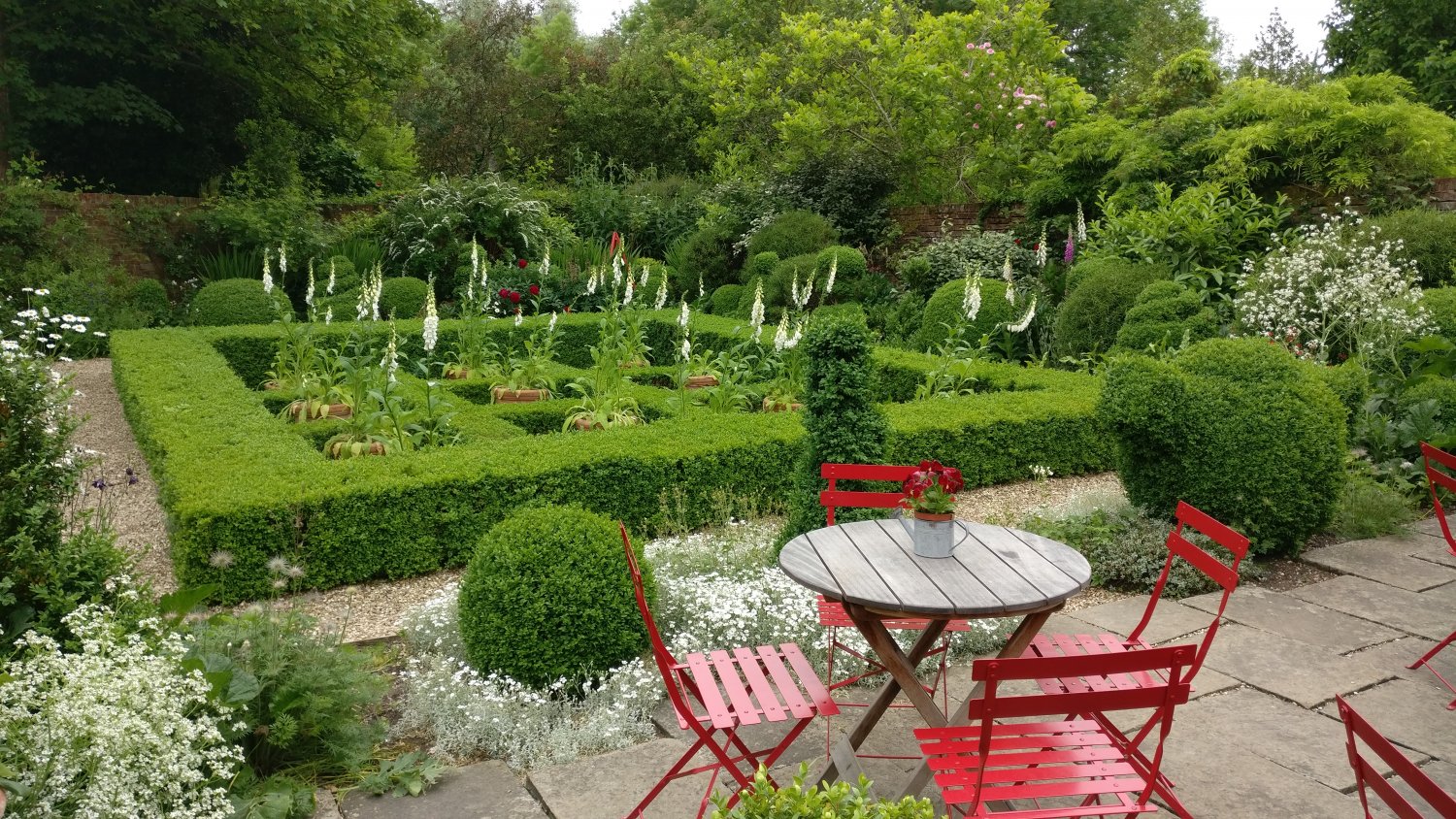Best Plants for Topiary?

Darren Lerigo of Modern Mint guides you through the various plants that can be clipped into topiary.
Plants for topiary are wide and varied, from the traditional Boxwood (Buxus – obviously the favourite for EBTS) through to something more obscure like Phillyrea.
To help you decide on the best plant for topiary in your garden, why not ask yourself these questions below?
Does The Plant Seed Or Sprout?
Seeders will put the majority of their energy into growing, flowering and setting seed.
Seeds are how they prosper, all important to a plant in the uncertain wild. They don’t use precious resources making dense wood or getting their roots in the ground because they don’t plan on being around all that long. In terms of topiary, this means they are terrible at growing back when hard pruned. As an example, try cutting a lavender down to ankle height, right into bare wood beyond the leaf. It won’t grow back. It just isn’t in its nature too! You can still make topiary from lavender, but you need to be much more careful with your shears.
On the other hand, sprouters are plants that have adapted to the chomping of wild animals, so will thrive when you and your pruning shears get to work. Use this inherent capability to regrow when ‘pruned’ to your advantage, and choose a sprouter for topiary in your garden.
Sprouting Plants?
- Box showing very strong re-growth after severe pruning
- Yew clipped to look like a carrot with re-growth on exposed stems
- Hawthorn outer clipped hedge and half dome standards
- Light silvery green Olive leaves
Does The Leaf Reflect Light?
I believe it imperative to reflect our weak British sunshine back into the garden, making the most of the light we have. I make topiary with plants whose leaves reflect the sun.
However, I have worked in many gardens where the waxy leaf of laurel predominates the garden boundaries. Laurel is a landscaper’s friend, growing in tough conditions and surviving with little care, but it is a plant that impoverishes our landscape when grown in abundance – the leaf dulls the sunlight and makes the garden grey and miserable.
Please pick a leaf that brightens the garden.
- Light green olive leaves
- Box showing off light and shade
- Shiny Holly leaves
- Phillyrea leaves
- Holm Oak
Does It Grow Well?
Is the soil good enough here? Is it too wet? Too cold? Will it suffer from disease?
If conditions don’t suit your topiary plant you will have to work harder to keep it alive. Or even worse – work harder to keep it alive and yet still it never looks happy. A thought as depressing as a laurel leaf sucking the life from your garden.
An alternative topiary plant, if you garden on wet soil, is Hornbeam, instead of the slightly more elegant Beech.
You could plant Teucrium or Ilex crenata instead of Boxwood if you are worried about blight.
You may even choose Olive ahead of Yew, if the soil is thinner where you garden or the plants are in full sun.
A garden full of plants growing in conditions they appreciate is much better than a garden of plants that are struggling to grow.
Finally… Does The Plant Offer Anything Of Value To Wildlife?
Just because you are going to cut it every year, it doesn’t mean your topiary should give nothing to the non-human garden visitors you have each day.
I have seen Pyracantha trained against a house and then cloud pruned, effectively spaced to cover the facade of the house in the gaps between windows. The stems were covered in a bounty of berries for the birds.
Hebe can be left unpruned in summer, to flower for the honeybee, then clipped into a neat ‘blob’ in early September.
Azara is a much under-used shrub that is also enjoyed by the bees early in the year. An eminently clippable shrub too.
Boxwood hedges make brilliant nesting sites for small birds. Just don’t clip until Autumn, otherwise you will disturb them. And of course, Boxwood topiary provides a vast buffet of leaves for the box tree caterpillar but I draw the line at thinking I’m helping wildlife when I see these chomping away!
Do consider what your topiary plants can do for wildlife when choosing what to grow. It is important we have gardens that are diverse, offering nectar, pollen, nesting sites and berries for all who need them.
Which Plant For Topiary Then?
For me, there is one plant that does all of the things mentioned above. It really is my number one plant for topiary. And it is – Boxwood.
Not only is it a beautiful and easy plant to clip, but it is adaptable, working with so many different garden styles. It can be formal – think plinths with figures atop, or hedges with crenellations. It can be informal – all wavy lines and tactile, ‘got-to-give-it-a-wobble-with-my-hand’ organic mounds.
No matter the season, it looks great – shining in summer sun or cloaked in winter frost.
It can be exploited as a backdrop, an evergreen canvas that shows off your more dashing and fiery flowers in the border.
Or it can be used as a subtle contrast that knits a design together – note its role in the White Garden at Sissinghurst.
I have seen boxwood in sparse, modern designs, restrained ‘Japanese style’ designs, placed unclipped amongst orchard trees and daffodils in romantic designs, plopped amongst a long weave of prairie grasses, reflected in water, softening steel sculptures, used as a boundary marker, grounded next to the front door of an old cottage, with roses growing over it, or even given a symmetrical ‘twin’ cone in opposing tubs by the porch of a suburban house.
Boxwood is used as the perfect foil in one design, then becomes the star of the show in the next. How it is clipped matters too, whether it mimics the landscape and other plants around it, or adds contrast. Whatever happens, you will be hard pressed to find it looking out of place.
That is why I recommend Boxwood is your go-to plant for topiary.
Now make sure your shears are sharp, get out there and start pruning!
Darren
Darren is a gardener and topiary artist who works all over the UK making and maintaining topiary. He teaches pruning too and his work can be found at Modern Mint

